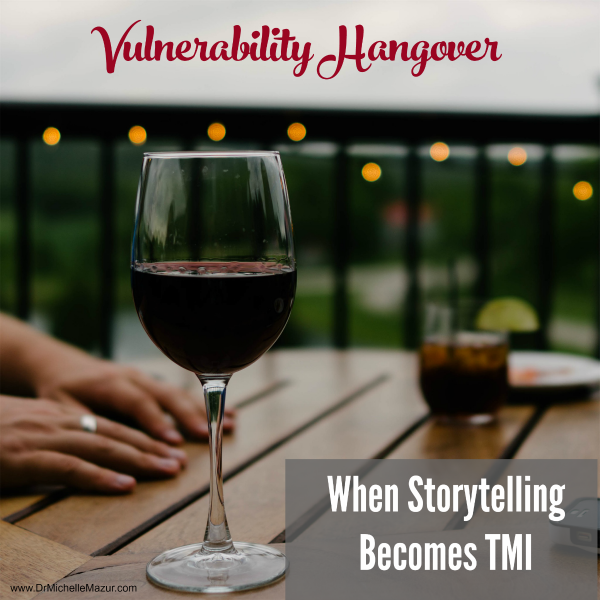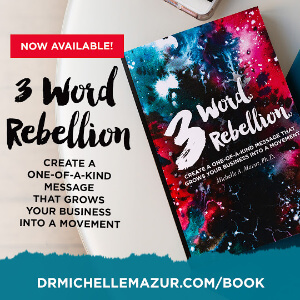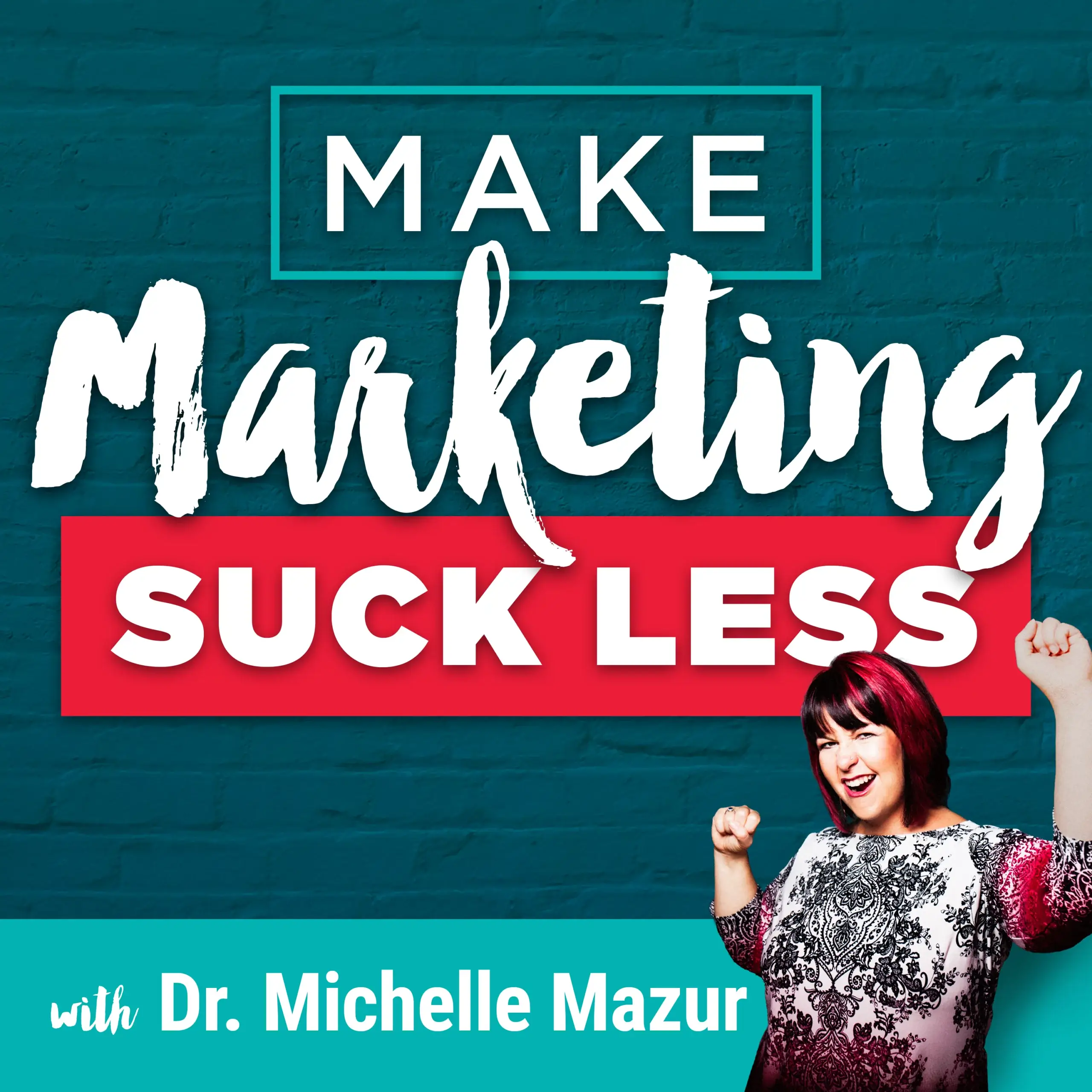Make Marketing Suck Less
Vulnerability Hangover: When Storytelling Becomes TMI
By Michelle Mazur > February 10, 2015
Filed Under Communication
 During a nasty, tumultuous, heart-wrenching break-up, I was also teaching interpersonal communication.
During a nasty, tumultuous, heart-wrenching break-up, I was also teaching interpersonal communication.
Every Tuesday and Thursday, I marched into class to explore topics like falling in love, how to maintain a relationship, and how to make relationships thrive.
I’d walk out of class exhausted thinking “Can we just get to the dark side? Break ups, deception, conflict…I’ll rock that material.”
But it got worse when I covered those theories! My students heard all about “my friend” who was going through a bad break up and was the source of all my examples.
My smarty pants students didn’t buy the “friend” cover story. In front of 40 college students, I re-experienced everything those that theories discussed: the pain, the anguish, the anger (epseically the anger), and the frustration. Not only was this personally more painful that I thought it would be but I feared that my reactions were so visceral that I was ruining all of them for future relationships.
This happened before the time of Brene Brown and her research on vulnerability, so little did I know that I was suffering from a “vulnerability hangover”. That feeling of being exposed when you’ve shared too much. That feeling that my students had knowing way too much about their professor.
Thanks to Brene’s research we are now told to embrace our vulnerability and know that our story matters, and that it’s important to tell it.
I agree… to a point. Now-a-days, a newsletter with a personal disclosure lands in my inbox about once a week. These tales can be wonderful and make a powerful point.
But other times…it’s just TMI. It’s too much for me to wrap my arms around.
if you can’t grasp the change you seek for the audience, then you must rethink telling the story. Sharing our vulnerability became yet another marketing tactic so that people will “know, like, and trust” us. We forget Brene Brown’s sage advice that you should be SELECTIVE about who you share your vulnerability with.
My clients ask me all the time how much of their story should they share? And these are the three questions I always ask them:
#1. Are you OUT of the story?
Never tell a story in front of a live audience or on your blog that you haven’t fully processed yet. If you’re still very much IN the story, thinking about it, experiencing the emotions of it, then that story is raw. It’s sacred. You don’t share the sacred with everybody.
You’re ready to share the story when merely thinking about doesn’t cause tears to well up in your eyes or you cause you to fly into a fit of rage. Your emotions are neutral, and the story feels like it’s a movie playing instead of something you’re experiencing in the moment first hand.
The story I told you at the beginning of this post happened 9 years ago. I feel neutral about the story (o.k. I’m slightly amused by how messed up I was, but that’s it).
#2 Does the story help you make a bigger point?
The “tell your story” advice is everywhere (heck, I’ve given it). It makes you unique. It makes your stand out and that’s true…to some extent.
I recently had a consult with a client who worked with another speaking coach who helped her tell her story.
Man, she had her story down pat, but the problem was that no one cared. She couldn’t get gigs because herstory didn’t have a larger point.
When you tell your story, there needs to be an action, an aha moment, or a major takeaway that affects the audience. Your audience must get a result from hearing this story.
Ask yourself this question :
As a result of hearing my story, how should my audience change?
If you can’t grasp the change you seek for the audience, then you must rethink telling the story. Sharing apersonal story is not just about how to get the audience to know, like, and trust you, but how to create a bigger and deeper meaning for them.
#3 Should the story ONLY be shared with your vulnerability inner circle?
Anytime when you divulge big, vulnerable, personal stories, you’re asking the audience to hold space for your story. For some audiences that might be a perfect fit, and for others your story might just be too much information.
It goes back to knowing your audience and what they are open to hearing. But the other takeaway here is that some stories are meant for you and your vulnerability inner circle. This inner circle is the people who know you, love you and support you no matter what. It’s a small, exclusive group.
My circle is my fiance and a couple of friends who’ve got my back. I tell them things I’d never ever talk about on this blog or during a speaking gig or in a newsletter. In fact, my friend and business mentor, Erika Lyremark, is always encouraging me to share more (and she’s brilliant at disclosing), but it’s not me. And that is perfectly fine.
The best advice is to follow your gut on this one. What feels right to you? What do you think your audience is open to creating space for? Is the “takeaway” you are offering meaningful enough to justify the sharing?
[Tweet “Vulnerability is not a marketing tactic or a speaking strategy. Vulnerability is a choice. “]
You choose the story to tell. You choose who to tell share your story with. You choose what your audience takes away from the story.
You’ll avoid the vulnerability hangover if you share stories you’ve fully processed, that make a bigger point for your audience, and that you’re comfortable sharing.
What say you? Have we gone too far with vulnerability? Love to hear what you think in the comments section.
Create Your One-of-a-Kind Message
Your 3 Word Rebellion is the Key to Growing Your Business & Impact






